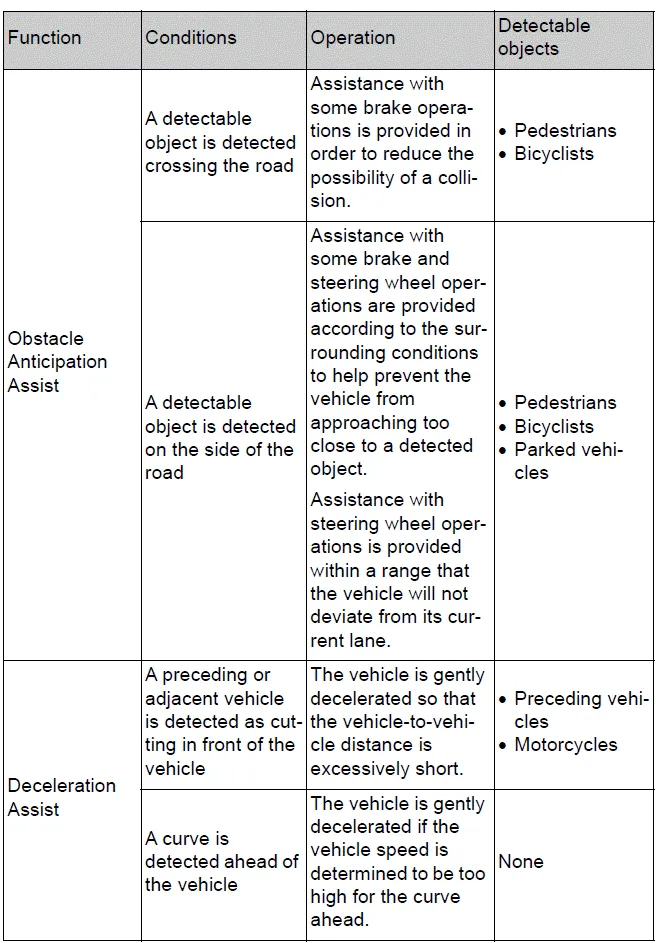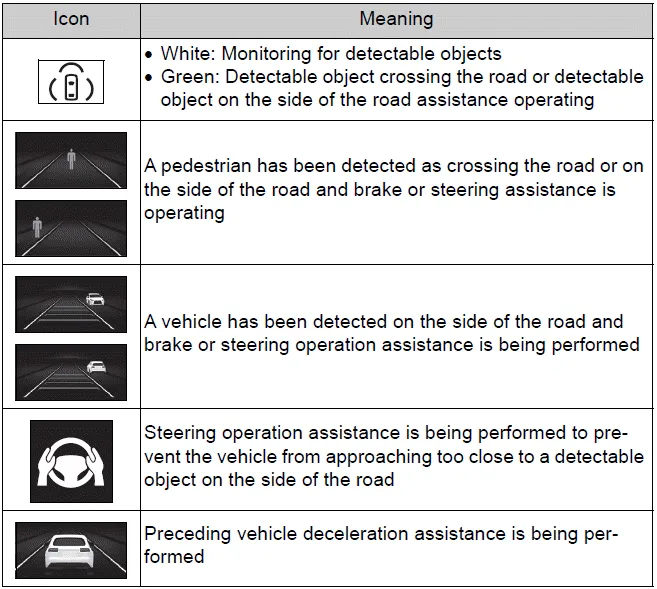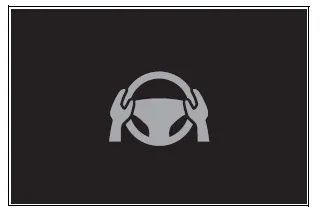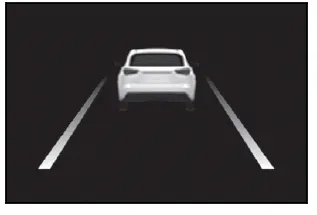Toyota Corolla (E210) 2019-2025 Owners Manual / Driving / Using the driving support systems / PDA (Proactive driving assist)
Toyota Corolla (E210): PDA (Proactive driving assist)
When a detectable object is detected, the proactive driving assist operates the brakes and steering wheel to help prevent the vehicle from approaching too close to the object.
WARNING
■For safe use
Driving safely is solely the responsibility of the driver.
- The proactive driving assist is designed to provide some assistance for regular braking and steering operations, as well as helping to prevent the vehicle from approaching too close to a detectable object. However, the scope of this assistance is limited.
The driver should perform brake and steering operations as necessary.
Read the following items carefully. Do not overly rely on the proactive driving assist and always drive carefully.
- The proactive driving assist is
not a system which reduces the
amount of attention necessary
for safe driving. Even if the system
is operating correctly, the
surrounding conditions as recognized
by the driver and
detected by the system may differ.
It is necessary for the driver to pay attention, assess risks, and ensure safety. Over-reliance on this system to drive the vehicle safely may lead to an accident resulting in death or serious injury.
- Proactive driving assist is not a system which allows for inattentive driving and is not a system which assists in poor visibility conditions. The driver is solely responsible for paying attention to their surroundings and driving safely.
■When turning proactive driving assist off
- Situations in which the sensors may not operate properly
- When it is necessary to disable the system
System operating conditions and detectable objects
According to the driving conditions, the operation and detectable objects of the proactive driving assist will change as follows.

■Vehicle speeds at which the system can operate
- Detectable object crossing the road assistance
Approximately 20 to 35 mph (30 to 60 km/h)
- Detectable object on the side of the road assistance
Approximately 20 to 35 mph (30 to 60 km/h)
- Preceding vehicle deceleration assistance
Approximately 15 mph (20 km/h) or more
- Curve deceleration assistance
Approximately 15 mph (20 km/h) or more
■System operation will be canceled when
- In the following situations, system
operation will be canceled :
- When the dynamic radar cruise control is operating
- When the PCS is off
- Situations in which some or all of the functions of the system cannot operate
- When the P, R or N shift position is selected
When the vehicle speed falls below approximately 9.3 mph (15 km/h)
Or when a certain vehicle speed has been reached, as judged by the system, according to the surrounding conditions
- In the following situations, system
operation may be canceled :
- When the brake control or output restriction control of a driving support system operates (For example: PCS, drive-start control)
- When the system determines that a detected object has moved away from the vehicle
- In the following situations, system
assistance may be canceled :
- When lane lines can no longer be detected
- When the brake pedal has been depressed
- When the accelerator pedal has been depressed
- When the steering wheel has been operated with more than a certain amount of force
- When the turn signal lever is operated to the left/right turn position
WARNING
■Situations in which the system may not operate properly
- Situations in which the lane may not be detected
- When a detectable object stops immediately before entering the path of the vehicle
- When passing extremely close to a detectable object behind a guardrail, fence, etc.
- When changing lanes while overtaking a detectable objec
- When passing a detectable object that is changing lanes or turning left/right
- When there are objects (guardrails, power poles, trees, walls, fences, poles, traffic cones, mailboxes, etc.) in the surrounding area
- When there are patterns or a painting ahead of the vehicle that may be mistaken for a detectable object
- When passing through a place with a low structure above the road (tunnel with a low ceiling, traffic sign, signboard, etc.)
- When driving on snowy, icy, or rutted roads
- When a detectable object is approaching your vehicle
- When your vehicle or a detectable object is wandering
- When the movement of a detectable object changes (change in direction, sudden acceleration or deceleration, etc.)
- When suddenly approaching a detectable object
- When a preceding vehicle or motorcycle is not directly in front of your vehicle
- When there is a structure above a detectable object
- When part of a detectable object is hidden by another object (large luggage, umbrella, guardrail, etc.)
- When multiple detectable objects are overlapping
- When a bright light, such as the sun or headlights of another vehicle, is reflecting off of the detectable object
- When the detectable object is white and looks extremely bright
- When the color or brightness of the detectable object causes it to blend in with its surroundings
- When a detectable object cuts in front of or emerges from beside a vehicle
- When approaching a vehicle ahead which is perpendicular or at an angle to the vehicle, or is facing the vehicle
- If a parked vehicle is perpendicular or at an angle to the vehicle
- When a bicycle is a child sized bicycle, is carrying a large load, is carrying an extra passenger, or has an unusual shape (bicycles equipped with a child seat, tandem bicycles, etc.)
- When a pedestrian or bicyclist is shorter than approximately 3.2 ft. (1 m) or taller than approximately 6.5 ft. (2 m)
- When the silhouette of a pedestrian or bicyclist is unclear (such as when they are wearing a raincoat, long skirt, etc.)
- When a pedestrian or bicyclist is bending forward or squatting
- When a pedestrian or bicyclist is moving at high speed
- When a pedestrian is pushing a stroller, wheelchair, bicycle or other vehicle
- When a detectable object blends in with the surrounding area, such as when it is dim (at dawn or dusk) or dark (at night, in a tunnel, etc.)
- When the lane width is 13.1 ft. (4 m) or more
- When the lane width is 8.2 ft. (2.5 m) or less
- When the vehicle has not been driven for a certain amount of time after the engine was started
- While turning left or right or a few seconds after turning left or right
- While changing lanes or a few seconds after changing lanes
- When entering a curve, driving around a curve and a few seconds after driving around a curve
Changing proactive driving assist settings
- The proactive driving assist can be enabled/disabled through a customize setting.
- The following settings of the proactive driving assist can be changed through customize settings.
System operation display
Depending on the situation, the following indicators or icons will be displayed.
Some icons cannot be displayed unless the display is changed to the driving safety support function information screen.


■Hands off steering wheel warning operation
In the following situations, a message urging the driver to grip the steering wheel and the icon shown in the illustration will be displayed on the display to warn the driver. If the system detects that the steering wheel is held, the warning will be canceled. When using the system, make sure to grip the steering wheel firmly, regardless of whether the warning is operating or not.

- When the system determines the driver is not holding the steering wheel while the lane centering function is operating
If no operations are detected for a certain amount of time, a buzzer will sound, the warning will operate.
This warning may also operate if the driver only operates steering wheel a small amount continuously.
■Warning operation after preceding vehicle deceleration assistance has ended
After preceding vehicle deceleration assistance has ended, if the driver does not operate the brake pedal or accelerator pedal and the vehicle approaches the preceding vehicle, the display will flash and a buzzer will sound to urge the driver to decelerate. If the system determines that the driver is operating the brake pedal or accelerator pedal, the warning will be canceled.

Other materials:
Manual transmission / transaxle
Service data
Torque specification
...
How to proceed with troubleshooting
1 Vehicle brought in
2 Customer problem analysis check and symptom check
3 Problem symptoms table
Without applicable symptoms, proceed to ”a”
with applicable symptoms, proceed to ”b”
4 Perform troubleshooting in the following method, depending on
malfunction symptom ...
Cd cannot be inserted or is ejected right after
insertion
Wiring diagram
Inspection procedure
1 Check if a proper cd is inserted
Check that a proper cd is inserted.
Make sure that the cd is normal audio cd, and that there is no
deformation, flaw, stain, burr and
other defects on the cd.
Standard: normal audio cd.
Reference:
...


